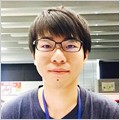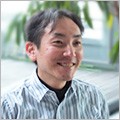We are exploring new algorithms to construct biomolecular structures from coherent diffraction patterns of a single particle observed by X-ray free electron laser (XFEL). Coherent diffraction patterns contain useful information on bimolecular conformations. However, the actual intensity on coherent diffraction pattern from a single particle is very weak. We need to extract useful signal from noisy data. I pay attention to develop and improve an algorithm to detect similarity between pairs of coherent diffraction patterns from an orientation-unknown single particle to extract useful information from noisy data [1,2].
This similarity detection algorithm for noisy diffraction patterns is extremely useful for single particle imaging. For example, this detection is an important step towards classification of a large number of experimental coherent diffraction patterns for reconstructing three dimensional structure of the molecule [1]. For another example, the detection algorithm plays an important role in a hybrid method using computational algorithms to generate hypothetical structural models for searching best agreement with limited experimental data [3].
Improvement of the similarity detection algorithm allows us to reduce the incident beam intensity, thus enabling to alleviate the radiation damage of sample during data acquisition [4,5].
In the presentation, I would like to talk about the possibility of single particle diffraction imaging using XFEL via attainable resolution as a function of the necessary incident beam intensity according to improved similarity detection algorithm.
[1] Tokuhisa, A., Taka, J., Kono, H., Go, N., 2012. Classifying and assembling two-dimensional X-ray laser diffraction patterns of a single particle to reconstruct the three-dimensional diffraction intensity function: Resolution limit due to the quantum noise. Acta Crystallogr. Sect. A Found. Crystallogr. 68, 366–381.
[2] Tokuhisa, A., Arai, J., Joti, Y., Ohno, Y., Kameyama, T., Yamamoto, K., Hatanaka, M., Gerofi, B., Shimada, A., Kurokawa, M., Shoji, F., Okada, K., Sugimoto, T., Yamaga, M., Tanaka, R., Yokokawa, M., Hori, A., Ishikawa, Y., Hatsui, T., Go, N., 2013. High-speed classification of coherent X-ray diffraction patterns on the K computer for high-resolution single biomolecule imaging. J. Synchrotron Radiat. 20, 899–904.
[3] Tokuhisa, A., Jonic, S., Tama, F., & Miyashita, O. 2016. Hybrid
Approach for Structural Modeling of Biological Systems from X-ray Free Electron Laser Diffraction Patterns. Journal of structural biology.(in press)
[4] Kai, T., Tokuhisa, A., Moribayashi, K., Fukuda, Y., Kono, H., & Go, N. (2014). Intensity of Diffracted X-rays from Biomolecules with Radiation Damage Caused by Strong X-ray Pulses. Journal of the Physical Society of Japan, 83(9), 094301.
[5] Kai, T., Tokuhisa, A., & Kono, H. 2013. Calculation of Molecular-Structure-Based Damage Caused by Short-Pulse High-Intensity X-ray Lasers. Journal of the Physical Society of Japan, 82(11), 114301.





